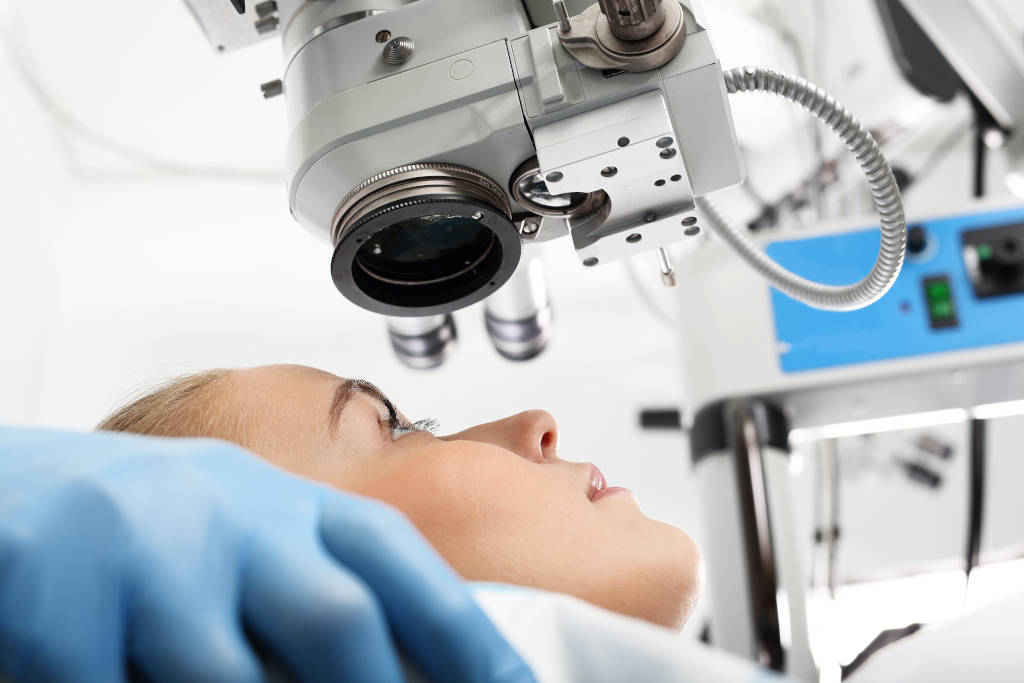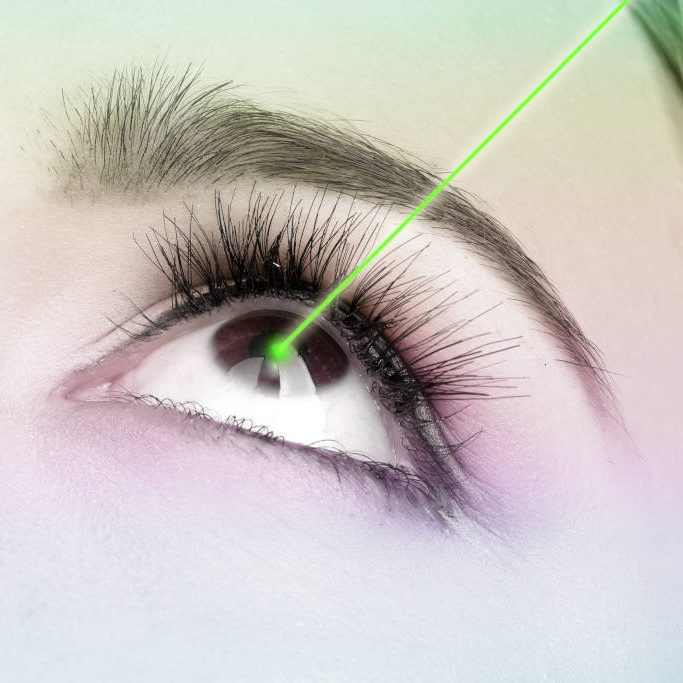GENERAL
Refractive surgery is a method of correction or improvement of the eyesight for patients presenting a refractive error, such as myopia, hyperopia, astigmatism and presbyopia.
There are several surgical procedures aiming to improve the focusing potential of the eye in order for patients to be able to see clearly without glasses or contact lenses. These operations may include reshaping of the cornea or implantation of an artificial corrective lens inside the eye.
The commonest types of refractive surgery are the laser procedures, such as LASIK (Laser in situ keratomileusis) and PRK (Photo Refractive Keratectomy) while another procedure called ICL (Intraocular contact lens) implantation involves placement of special corrective lens in front of the natural crystalline lens of the eye or in front of the iris.
No method of correction of refractive errors is unanimously accepted as ideal. The decision for the best treatment option for each patient is a result of thorough examination and detailed discussion about the needs of the patient with your ophthalmologist.
Myopia
Myopia is the commonest cause of poor eyesight amongst people below the age of 40. In this type of refractive error, the lens of the eye does not focus light onto the retina, as in normal eyes, but in front of it giving a rather blurred image. Consequently, people with myopia cannot see clearly objects that are at a long distance.
Myopia usually appears in childhood possibly in a child whose one or both parents have myopia as well. In most cases, refraction stabilizes in early adulthood, but in certain cases it continues to increase over the years.
Myopia is measured in diopters, which represent the lack of ability of the eye to focus. Those having a higher diopter of myopia can see clearly only at a distance of a few centimeters from their eyes. Those having a low degree of myopia can see clearly at a distance of a few meters.
Symptoms
The commonest symptoms of myopia are:
- Blurry vision at a distance
- Excessive effort to accommodate causing eye fatigue and headaches
Astigmatism
Astigmatism is due to an uneven curvature of the cornea or the crystalline lens of the eye.
In normal eyes, the cornea and the crystalline lens are smooth and evenly curved towards all directions. This helps light beams focus onto the retina at the back of the eye.
If the cornea or the crystalline lens is not smooth and evenly curved, the light does not focus correctly on the retina and the vision becomes blurry and distorted both for close up and for far.
Often, astigmatism co-exists with other refractive anomalies, such as myopia and hyperopia.
Hyperopia
Hyperopia is a common vision problem, which affects one fourth of the population. People with hyperopia can see objects at a long distance very clearly, but have difficulty focusing on objects at a close distance.
Hyperopia is caused when the light beams entering the eye focus behind the retina and not directly on it, as is the normal case.
Symptoms
People suffering from hyperopia have blurry eyesight at close distances. In addition, they suffer from headaches or eye strain and may feel tired when working for several hours on a project which is close up.
Presbyopia
Presbyopia is the loss of accommodation that appears naturally over the years. It is caused by gradual thickening and loss of flexibility of the natural lens inside the eye due to ageing. These changes make focusing on objects at a close distance gradually more and more difficult.
Most people start noticing the effects of presbyopia at some point after the age of 40, when they begin having problems seeing clearly to read for example messages on the screen of their mobile phone.
Presbyopia is unavoidable and it usually appears both to people with previous refractive problems as well as to people who never had a problem with their vision previously.
Although presbyopia affects everybody and is a common condition, it often has a significant emotional impact on people, as it is a sign of ageing that is impossible to ignore and difficult to hide.
Symptoms
Presbyopia may cause headaches, discomfort and visual fatigue that can make reading and other activities that demand good reading vision less convenient and more tiring.
Treatment
Refractive errors (myopia, astigmatism, hyperopia, presbyopia) may be corrected with glasses, contact lenses or refractive surgery, depending on the degree of error and the personal lifestyle needs of the patient.
The use of glasses or contact lenses may be continuous or limited to certain activities that require clear vision at a particular distance, such as driving or watching TV (astigmatism, myopia) or reading (presbyopia).
Refractive surgery may reduce or eliminate your need for glasses or contact lenses.
Amongst the commonest procedures in ophthalmology are laser refractive procedures. There are two basic methods of laser treatment of myopia/hyperopia/astigmatism:
LASIK (Laser in situ keratomileusis) is the most popular operation in refractive surgery. It lasts 10 to 20 minutes and usually the laser is applied for less than one minute. In this procedure, the Eye Surgeon uses special cold laser (excimer laser) which does not cause damage to the eye. Mechanical microkeratomes or Femtosecond laser keratomes are being used to create a flap on the cornea and laser energy is applied underneath the corneal flap , in order to sculpt the cornea by removing a tiny layer of tissue depending on the level of refractive error.
For the treatment of myopia, layers of tissue are being removed from the centre of the cornea in order to limit its curvature.
In hyperopia, tissue in the shape of a ring is being removed from the periphery in order to boost corneal curvature and eliminate the need for glasses.
In case of astigmatism, the surgeon can eliminate the deformations in corneal curvature by applying special laser patterns available by modern laser technology.
The outcomes of the LASIK procedure as far as the restoration of the vision is concerned are immediate and the patient can see much better from day 1 post-surgery.
PRK (Photo Refractive Keratectomy) is a laser procedure that is sculpting the cornea in order to eliminate refractive error without flap formation. In PRK, laser is applied directly on the cornea after epithelial removal without cutting and potentially destabilizing cornea to create a flap. This is considering a major advantage in terms of potential complications in the short term or the long term for the patient.
The outcomes of PRK surgery are evident approximately 7 to 10 days after treatment which is the recovery period for reepithelization and vision stabilization.
Intraocular contact lenses (ICL) are another surgical option for patients who cannot undergo laser therapy due to rather high myopia (above 8-10 diopters) or due to very thin cornea.
For these patients, there is the option of surgical implantation of an artificial, very thin lens in front of the crystalline lens of the eye, which remains intact. The artificial lens has all the power of the glasses incorporated in it so the patient after a limited recovery period can enjoy good distance vision without the aid of glasses or contact lenses.
Correction of refractive error with the use of laser procedures has the following requirements:
- Age above 20
- Good general health
- Absence of any chronic corneal or retina disease
- Stable refraction for at least one year
Refractive surgery is not recommended during pregnancy and the breastfeeding period as well as in the case of imminent pregnancy.







